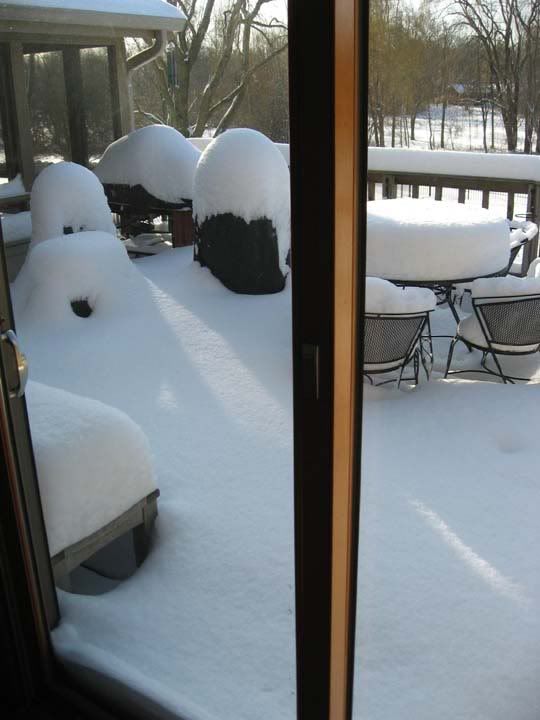Welcome to the EGGhead Forum - a great place to visit and packed with tips and EGGspert advice! You can also join the conversation and get more information and amazing kamado recipes by following Big Green Egg to Experience our World of Flavor™ at:
Want to see how the EGG is made? Click to Watch
Facebook | Twitter | Instagram | Pinterest | Youtube | Vimeo
Share your photos by tagging us and using the hashtag #BigGreenEgg.
Share your photos by tagging us and using the hashtag #BigGreenEgg.
Want to see how the EGG is made? Click to Watch
Adjusting for temperature and rainy weather
When I bring my egg to 350 degrees this is what I do. I close the lid after the charcoal is really going well. When it reaches 350 or a bit more I begin by closing the bottom draft so that it's open about 2" and I leave the top daisy wheel alone. After that, it's just try this and try that. Is this the best way to go about adjusting the egg or do you have a more disciplined, alternate way? Also, since charcoal doesn't like dampness, what do you do when it rains? I don't have a way to shield the egg from the rain.
Comments
-
Dr. Jim,
People will tell you otherwise... But take it from a Seattle area, year round egger, nothing needs to be done because of rain... Just cook as you would, no need for rain caps or chiminey covers from Lowes, or foil or anything like that...[p]Just keep your bag of lump dry and you will be fine....
-
Dr. Jim,[p]I always start with bottom wide open, and nothing on top. For a 350 cook, I hit the lump with my MAPP torch for at least 1.5 min. After about 10 minutes, I check the temp. Usually its coming up on 250, if I am not using a platesetter, etc. Its longer with that in. I am occassionally surprised to find it already at 350. Occassionally I am disappointed to find it still around 150. This happenes to me if the Egg sits unused for several days during really damp weather, and I didn't cover it.[p]When the temp hits 300, I shut the bottom to about an inch and a half, and put the daisy on full open. This usually stops the temperature rise for awhile. This is also when most of the nasty white smoke comes out. When the temp reaches 325, I shut the daisy, but leave holes wide open. At 340, I shut the daisy so that the holes are only about 1/8 inch open. If the temp rise doesn't slow and stop, I tap the bottom vent a little more closed, no more than 1/8" at a time.[p]By this time, the temperature rise is slow enough that tapping the bottom vent a bit more usually gets me to about 350, maybe a bit more. For some 350 cooks, I've had the bottom down to 1".[p]Then I let the Egg sit for at least another ten minutes, so the the fire is nice and stable. Even if the dome registers a temperature drop when the food is put on, coming back to 325 after a few minutes, its O.K. The fire is going just as before. If it stays down longer than 1/2 hour, I open the daisy a bit. Later, as the meat heats up, I go back to where it was when first at 350.[p]The general rule seems to be that the longer you let the fire build up momentum, the more likely it is that the temperature will rise past where it should be. So its better to damp the fire down a bit early than late.[p]The only problem I've had with rain, so far, is that without a stove pipe cover over the daisy, water gets in, and I get a puddle on my food.[p]gdenby
-
Dr. Jim,
wet/damp lump just takes a little longer to light, you need to wait for the smoke and steam to clear before cooking. i bought a stove top cap for cooking in the rain but have only used it once in all the years ive owned it, i just cook in the rain with the daisy on top and its been fine in the worst weather.
fukahwee maineyou can lead a fish to water but you can not make him drink it -
-
gdenby, Thank you so much. What a clear, detailed response to my query. This kind of help keeps one from over experimenting!
Categories
- All Categories
- 183.1K EggHead Forum
- 15.7K Forum List
- 460 EGGtoberfest
- 1.9K Forum Feedback
- 10.3K Off Topic
- 2.2K EGG Table Forum
- 1 Rules & Disclaimer
- 9K Cookbook
- 12 Valentines Day
- 91 Holiday Recipes
- 223 Appetizers
- 517 Baking
- 2.5K Beef
- 88 Desserts
- 167 Lamb
- 2.4K Pork
- 1.5K Poultry
- 32 Salads and Dressings
- 320 Sauces, Rubs, Marinades
- 543 Seafood
- 175 Sides
- 121 Soups, Stews, Chilis
- 37 Vegetarian
- 102 Vegetables
- 314 Health
- 293 Weight Loss Forum


 [p]
[p]